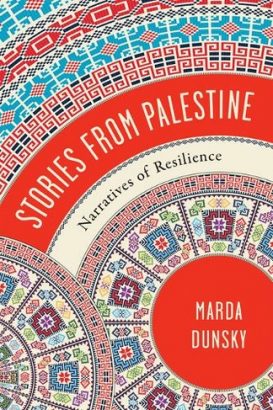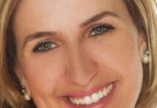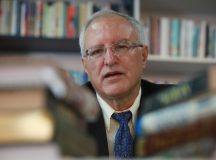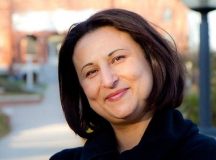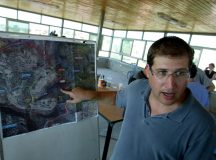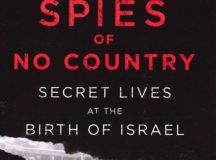To be entrusted with someone’s narrative is a privilege. To grant such access … is an act of faith. To be on the receiving end of such an act of faith is a privilege. Marda Dunsky, Stories from Palestine: Narratives of Resilience. (p. 185)
In her new book, Stories from Palestine: Narratives of Resilience, Marda Dunsky, scholar, author, journalist, and expert of the contemporary Middle East, offers a vivid overview of modern Palestinian society. Between 2015 and 2019, she conducted in-depth interviews with women and men from various Palestinian cities, towns, villages, and refugee camps, while using a wide range of secondary sources to contextualise Palestinian life under Israeli occupation. Her stories present Palestinians as self-actualising change agents whose constructive social engagement in the face of occupation is seldom explored in depth by the media and academia. Dunsky takes up Palestinian productive and creative capacity across a broad spectrum: women and men, Muslims and Christians, professionals and entrepreneurs, students and teachers, family farmers, cultural curators, and refugees. (p. 5)
Her book Stories from Palestine is composed of an ‘Introduction: The Story Behind the Stories,’ and six chapters titled, ‘Made in Palestine’, ‘Lessons in Liberation’, ‘Beautiful Resistance’, ‘Day by Day in Jerusalem’, ‘In Gaza, They Are Not Numbers’, and ‘Imperatives of Narrative’. Throughout its pages, she intricately examines the lives of five million Palestinians who live in the West Bank, East Jerusalem, and the Gaza Strip — the areas envisioned for eventual Palestinian independence. The author rightly maintains their stories are not being presented in the American mainstream media, reports, and scholarly studies. (p. 3) She challenges reductive stereotypical images of Palestinians as terrorists and perpetrators of violence, unearths stories that find no place in the dominant Israeli narrative, showcases Palestinian accomplishments rarely mentioned in Western media, and introduces readers to ordinary Palestinians fighting the occupation through non-violent and creative ways, such as a ‘theatre for children’ and those excelling in their work such as Areej Al-Madhoun, who at age 14 as a ninth-grader in the Jabalia refugee camp in the Gaza Strip won first prize in the 2012 Intelligent Mental-Arithmetic Competition in Malaysia. (p. 4)
Dunsky argues there is no parity in this asymmetrical conflict, due primarily but not exclusively to the last half-century of US policy. The West Bank is dominated by Israeli settlements and de facto control of the Jordan Valley, with the longtime tacit acceptance of the international community and outright backing from the American administrations. Such a one-sided policy makes the two-state solution, still in vogue in much international discourse, unfeasible. (p. 15)
Moreover, she argues, the media plays a crucial role in how the Israeli-Palestinian conflict is portrayed in Western minds. Many stories remain mostly untold in favour of arcs shaped by conflict, emphasise oppression, and often culminate in violence. Clues might be gleaned from the perspectives of media and communications theorists. Herbert Gans observes that journalists do more than observe reality and report events. By selecting topics and sources and by framing issues, they construct reality and go even further: ‘The news does not limit itself to reality judgments; it also contains values, or preference statements.’ (p. 23)
In Chapter One, Dunsky narrates some stories of Palestinian farmers from the West Bank. They struggle with determination to maintain their lands and their resilience despite the shortage of essential ingredients to their survival, such as water. In one of her enlightening examples, Dunsky draws attention to one of the farmers, ‘Adanan Massad’ from Faqqu’a, a Palestinian village in the northern West Bank, who explains to his visitors why he farms and how he does it. Massad works up to ten hours a day to cultivate his land, inherited from his father. Massad converted the tractor to run on used falafel oil, replacing diesel. CORE paid the initial $5,000 cost of the German-made peripheral converter and its installation. The move cut his tractor-fuel expenses by more than half, saving him nearly $2,000 a year. Reducing farmers’ use of fossil fuel and enhancing restaurants’ waste management are also good for the environment, which is referenced on the CORE placard affixed to the converter proclaiming in Arabic and English that the red iron horse is an ‘eco-friendly tractor’. (p. 30) ‘Land is the ultimate prize in the Israeli-Palestinian conflict — but Palestinians are continually confronted by harsh realities of the Israeli occupation that makes cultivating their land difficult and, in some cases, impossible’, Dunsky notes. (p. 31) It is the link between the people and their land which binds Palestinians to their history and culture and sustains their future. (p. 35)
Captivatingly is Reja-e and Musaab Fayyad’s story, growing organic strawberries, juicy and sweet, on a three-dunam patch of land — three-quarters of an acre — in the village of Zababdeh, just south of Jenin. The brothers box their red fruit in pint-size plastic containers labeled ‘The Brothers Farm, Zababdeh, Palestine’; the stickers echo the motif and colours of the Palestinian flag. ‘We are local producers,’ says Musaab, 26, who has a degree in finance and a family line of farmers at least three generations long. ‘Our customers come here to pick the berries themselves — and they feel good about it.’ (p. 9) The boxes that they use to pack their produce bear slogans in Hebrew, such as ‘From the Peaks of Galilee Golan,’ a region roughly 75 to 100 kilometres north of Zababdeh, across the Green Line, the internationally-recognised demarcation separating Israel from the territories it occupied in 1967. Such Palestinian-made containers are in short supply, says Reja-e, 41, so the brothers use Israeli ones. To overcome limited water access, the Fayyads built an 80,000-gallon rainwater catchment basin to irrigate their crops. They stocked it with musht, otherwise known as tilapia or St. Peter’s fish. The brothers pipe the water into their greenhouse to irrigate the plants and feed them with fish waste, saving 90 per cent on fertiliser costs. (p. 33)
Chapter Two, ‘Lessons in Liberation,’ presents a story of Palestinian education in the West Bank. We see how teachers, professors, and officials pave the way for youth to learn and advance their knowledge. One inspiring model is Hanna Al-Hroub, who though raised in the restricted Dheisheh refugee camp, south of Bethlehem, in an environment of poverty and violence, succeeded in March 2016 to win the Second Annual Global Teacher Prize Competition, held in Dubai and sponsored by the UK-based Varkey Foundation. Al-Hroub was nominated among 8,000 entrants worldwide — from Australia, Finland, India, Japan, Kenya, Pakistan, Palestine, the UK, and the US. In a live video announcing the winner, Pope Francis praised the nominees as ‘artisans of humanity, builders of peace and unity’. (p. 51) Al-Hroub would recount as the media spotlight focused on leading up to and following her Global Teacher Award, ‘I didn’t have much of a childhood. A child will mature quickly here … growing up in Dheisheh imbued me with the persistence and resilience I needed to face challenges. Children elsewhere can enjoy their childhood, but not Palestinian children. You grow up aware and informed about politics and what’s happening around you.’ (p. 52)
Al-Hroub remarked, ‘As teachers, we ask ourselves what our key goal is? Is it to build a free human being, a thinking person who applies his mind to reasoning and solving problems he faces in his life? Our goal should be that students have skills to face the problems they encounter,’ she says. ‘Our responsibility as Palestinian teachers is more difficult than that of other teachers because we must teach our students how to live under occupation. A teacher must remain strong enough to stand before her students as a brave person, to radiate bravery and courageousness, to convince them that they have the capabilities to change tomorrow and the future.’ (pp. 59-60)
Chapter three communicates the stories of West Bank Palestinians who work in arts and leisure. My dear friend Madees Khoury, of the Taybeh Brewing Company Operations Manager, owned by the Khoury family, explains the challenges of working in a village situated northeast of Jerusalem. She gives an example of trying to ship a small quantity of beer to a Copenhagen festival. Security inspections delayed the shipment at the Israeli ports of Ashdod and Haifa ‘because we are Palestinian’. (p. 2) Madees persisted, affirming that the difficulties only made her stronger. She was blessed, she asserts, to have a grandfather who encouraged her to give up her comfortable life in Boston, leaving behind her friends and her life without hardships. ‘To get the sense of Palestinian people to other people who have never been under occupation, you have to reach them through something relatable — like music, food, beer. That is something people can understand,’ Madees says. (p. 108) Despite the occupation, Madees and her family managed to establish their brewery in Taybeh village near Ramallah. In itself, that is a victory over the restrictions imposed on them.
Chapter Four, entitled ‘Day by Day in Jerusalem’, introduces Palestinians asserting their presence in East Jerusalem, often a focal point of conflict but always a Palestinian identity locus. Here we meet Imad Al-Khatib and his son Afif, who go to the Old City every Friday to pray in Al-Aqsa Mosque and walk through its alleys to smell the traditions and history. To Palestinians, as Imad Al-Khatib states, ‘this place is crucial to us all because it symbolises the Palestinian cause in all it means. Palestine and Arab history revolve around one significant place’. (p. 114) Al-Khatib describes the problems Jerusalemite Arab residents encounter daily. He maintains that at the core of Arab daily life in Jerusalem, with all its inherent challenges, lies the underlying conviction that the large-scale displacement of Palestinians that resulted from the 1948 and 1967 Israeli-Arab wars can never be repeated. ‘We are not in a position to leave our country, whatever the Israelis are doing,’ he contends. ‘There is no Palestinian who will accept becoming a refugee again … that’s why there is a consciousness among all Palestinians living in Jerusalem that we have to adapt. You feel that you are intimidated every day with measures you have to accept. This is our city, and we have to keep resisting peacefully.’ (p. 120)
Nadia Harhash, whom I know personally, also resides in Jerusalem. She struggles to overcome the hurdles of a patriarchal society and the Israeli occupation. She stresses the need for freedom as the first human instinct. But in her quest for personal liberation, Harhash does not think of herself as a feminist, preferring instead the term ‘womanist’. (p. 145) She resembles the new generation of Palestinian women standing against the patriarchal society and asserting their identity despite the odds.
In Chapter Five, entitled ‘In Gaza: They are not Numbers,’ Dunsky tells the stories of Palestinians persevering amid the harsh conditions and uncertainties of daily life. Their narratives give sense to the meanings embedded in Palestinian lived experiences — so that we may consider new ways to interact with them. The 14-year-old Areej Al-Madhoun from the Jabalia refugee camp in the Gaza Strip won an international prize impressing the world with the Palestinian contributions to humanity. ‘For me’, she notes, ‘it was a success. But for my country, it was a great victory after the war. We did our best to tell the world that we are not just numbers; we are Palestinians.’ She emotionally quotes the Palestinian poet Rafeef Ziadah: ‘We Palestinians wake up every morning to teach the rest of the world life, sir.’ (p. 149)
In Chapter Six, we get acquainted with resilience stories of educators such as professor Atef Qasrawi who from his lab on the Arab American University campus conducts cutting-edge scientific research that advances information technology; Mohammad Abu Taleb found a career as an artist and teacher at the Birzeit Palestinian Circus School (PCS), which emphasises the development of social skills, building self-esteem, and expressing creativity; Mazin Qumsiyeh and his wife Jessie, as founders of the Palestine Museum of Natural History Museum in Bethlehem University; and, Nazmi Jubeh, a professor at Birzeit University who while waiting to cross the checkpoints, ‘managed to read one hundred books … my car was a library.’ Jubeh echos Palestinian sentiments in affirming he would stay steadfast as a Jerusalemite resident. ‘This is my city,’ he says. ‘Nothing will move me out of my city. We were driven from our homes in 1948. We will not repeat it.’ (p. 202)
The challenges in compiling a collection of narratives from Palestine are not merely intellectual, moral, and philosophical. There is also the challenge of access. While the sources themselves, and those who have served as bridges to them, were cooperative (pp. 186-7), a stranger seeking access to the Palestinian world and psyche would have to struggle hard. It is no minor matter for people under occupation to tell their inner feelings to strangers without fear of retribution. Yet Dunsky seems to have won over her interviewees and repaid the faith they placed in her when they opened up their private and professional lives to tell her their stories.
We call it Palestine but Palestinians living in different regions face various challenges from the harsh reality under occupation. Those who live in Jerusalem are facing residency threats and exorbitant Israeli municipal taxes (Arnona) but enjoy good health care and social security benefits. Those residing in Gaza suffer under Hamas from authoritarianism and shortage of social services, and lack of electricity. In the West Bank, they face movement restrictions from city to city and not being allowed to visit Jerusalem unless by having a special hard-to-get permit from the Israeli Ministry of Interior.
The main thread running through all the narratives in Stories from Palestine is resilience under occupation and authoritarian self-rule: Resistance to archaic social traditions, family despotism, male domination, and most significantly, Israeli occupation. In all the interviews, that is present, explicitly and implicitly, are individual narratives and musings on the collective predicament. Most interviewees spoke in English, so they may not necessarily represent the general public living in the Palestinian Territories. But they all share similar challenges, and their narratives are genuine iterations of the Palestinian sumūd (steadfastness). For example, see the testimony of Palestinian farmers to carry on with ordinary life under extraordinary circumstances. They persist in cultivating their land not only to maintain their physical existence but also as primary markers of cultural identity and historical continuity. (pp. 194-5)
Marda Dunsky poses the question of what we are to do with these ‘glittering narratives?’ ‘Are they merely stories?’ she asks. ‘Is it enough to be entertained and informed … should they spur activism? Who, in the telling and constructing and consideration of these narratives, has agency… ?’ (p. 197) The narratives in Stories from Palestine do not yield a quaint painting of a distant landscape. Instead, as the author explains, they are a mirror reflecting not only what can be empirically experienced but also what can be critically known. (p. 198)
Dunsky has produced an excellent work depicting contemporary Palestinian life. Undoubtedly, this book will be an essential reference for teachers offering courses in this field and those interested to know more about the daily life in Palestine and the pressures Palestinians endure under Israeli occupation. As a Palestinian scholar, I found Dunsky’s spirited endeavour to be a must-read for those concerned with narratives of resilience and survival under occupation. As a Palestinian peace activist, I hope she would continue her journey from profiling Palestinians as producers and creators to Palestinians as peacemakers.

